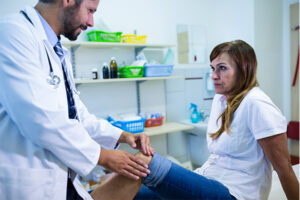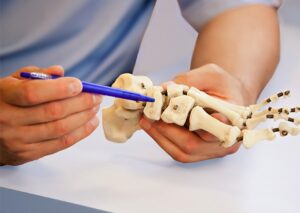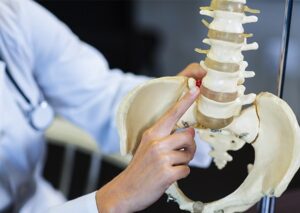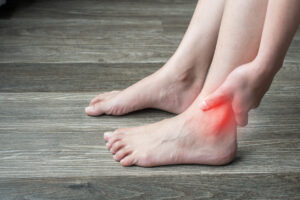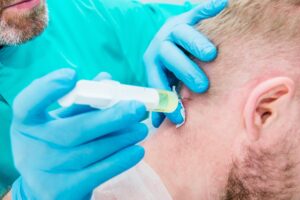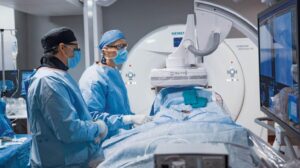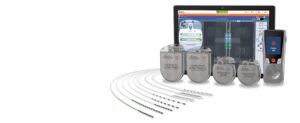RFN is a procedure performed on the nerves that carry the pain signals from the facet joints. These joints may be subject to inflammation or arthritis particularly in the low back or neck and sometimes the thorax, where they can cause pain to the surrounding area. The aim of RFN is to interrupt the nerve supply to the painful joints by decreasing the pain signals being sent to your brain. This procedure does not treat the underlying arthritis in the joints. Also, this procedure does not give permanent relief from pain, as the nerves eventually recover and the pain can return
Radiofrequency Neurotomy (RFN)
RFN is a procedure performed on the nerves that carry the pain signals from the facet joints. These joints may be subject to inflammation or arthritis particularly in the low back or neck and sometimes the thorax, where they can cause pain to the surrounding area. The aim of RFN is to interrupt the nerve supply to the painful joints by decreasing the pain signals being sent to your brain. This procedure does not treat the underlying arthritis in the joints. Also, this procedure does not give permanent relief from pain, as the nerves eventually recover and the pain can return. However, RFN may provide relief for 6-12 months. If the initial treatment is successful, this procedure can be repeated multiple times.
Indicators
- Neck, Thoracic, Low back pain that may spread to the back of the head, neck and shoulder and can cause headaches;
- Pain in the back of the chest, by the ribs; or
- Low back pain that may spread to the buttocks.
When you booking the procedure
On the day of booking your procedure, please advise staff if you are –
- Taking blood thinners (especially warfarin and clopidogrel)- T
- Diabetic
- Pregnant, or any chance of being pregnant
Allergic to:
- Shellfish
- Steroids
- Local anaesthetics
- Iodine
- Betadine
- Chlorhexidine
- Unwell or have an infection
DAY OF THE PROCEDURE
- DO NOT eat or drink (for 6 hours before your procedure),
- TAKE your usual medications with a small amount of water (apart from those mentioned above), and
- ARRANGE for someone to accompany you home.
DURING THE PROCEDURE
After arriving you will need to complete the necessary paperwork. Then –
- You will change into a hospital gown,
- A small drip will be inserted into one of your veins,
- You may be offered mild/moderate sedation
- Your heart rate and blood pressure will be monitored throughout the procedure,
- You will lie face down on an x-ray table, then the skin over the area to be injected will be cleaned with an antiseptic solution,
- A sterile barrier will be created,
- A local anaesthetic will be injected to numb the area,
- An x-ray machine will be used to guide a small needle towards the nerve,
- You may experience some discomfort, however this usually subsides and can be treated with icepacks and medication.
AFTER THE PROCEDURE
- You will be monitored in a recovery area until you are ready to go home. This usually takes between 60 – 120 minutes.
- Preferably, someone will take you home and stay with you for the next 24 hours.
- Pain may return when the anaesthetic wears off. Some people experience an initial increase in pain and stiffness, which may continue for several days. If necessary you may apply an ice pack to the area for 20 minutes at a time, for 1-2 days following the procedure.
- You may take simple pain-killers, such as Paracetamol or opioids to ease any discomfort.
- Remove any dressing the day after your procedure.
- Avoid a rapid increase in your activities. Gradually increase your daily activities as tolerated. Discuss this with your doctor.
If you have received sedation during your procedure, the effects may last up to 24 hours. Due to the effects, you may not remember some of the information given to you during the procedure. For the next 24 hours, you SHOULD NOT –
- Drive a vehicle,
- Drink alcohol,
- Operate machinery,
- Make important decisions,
- Sign legal documents, or
- Travel unaccompanied
COMPLICATIONS
Common Complications
- Continuing pain / no benefit
- Minor bleeding in the area injected
- Bruising in the area injected
- Temporary weakness or numbness from the local anaesthetic
- Brief increased pain that may fluctuate in intensity
More Serious Side Effects
- Damage to surrounding structures
- Pneumothorax (collapsed Lung)
- Infection
- Permanent nerve injury
- Allergy to the anaesthetic drugs used as part of the procedure
- Increase of any pre-existing medical condition such as cardiac conditions
- Bruising around the area from needle trauma
- Aspiration during sedation
- Eye injury while lying prone (face down)
- Serious anaesthetic / procedural complications and very rarely death
- Increased lifetime risk of cancer due to X-rays exposure
- Very rare risk of surgery due too injuries from the procedure
Please discuss with your doctor any other questions you may have about this procedure or this information sheet. If you agree to have the procedure, you will be asked to sign a consent form.
If you notice –
- Any swelling from the site,
- Any bleeding from the site, or
- Have any other concern
Please contact your General Practitioner, Queensland Pain Clinic, or the Emergency Department of your local hospital.



